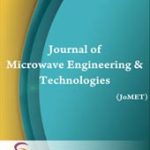
Krishnapriya M

Farsana Muhammed
- MTech Scholar, Department of Electrical & Electronics Engineering, TKMCE, Kollam, India
- Assistant Professor, Department of Electrical & Electronics Engineering, TKMCE, Kollam, India
Abstract
The Virtual Instrument (VI) uses custom software and hardware to create a user-defined measurement system, called a Virtual Instrument. Virtual instruments are similar to traditional instruments, such as multimeters, oscilloscopes, spectrum analyzers, and data acquisition systems. It has great flexibility, high performance, flexibility and low cost. Primarily, it consists of a personal computer or workstation, and Vi software such as LabVIEW, NI DAQmx, and MATLAB. This modular hardware includes data acquisition boards, signal conditioners, actuators, and finally, running software, which is used to let the VI software communicate with the hardware, according to the smart algorithms in the virtual system Through integrating so, it can clarify how these algorithms contribute to real-time data acquisition, analysis, and control strategies. This paper explores the use of VI, in different industries and its fusion with intelligent systems and automation, aiming to show that virtual instrumentation integrated with intelligent systems emerged as a modern automation cornerstone, which revolutionized industries and these industries’ manufacturing. In VI-based automation technologies, which also explore the integration of smart-virtual instrumentation in areas such as transportation and environmental control, the paper presents an emphasis on development and improvement opportunities.
Keywords: VI (Virtual Instrumentation), LabVIEW(Laboratory Virtual Instrument Engineering Workbench), MATLAB(matrix laboratory), wire electrical discharge machining (WEDM), High Voltage Power Devices (HVPD),Virtual Instrumentation System(VIS)
[This article belongs to Journal of Microwave Engineering and Technologies(jomet)]
References
1. Portillo, E., Cabanes, I., Marcos, M., Orive, D., & Sánchez, J. A. (2007). Design of a virtual instrumentation system for a machining process. IEEE Transactions on Instrumentation and Measurement, 56(6), 2616-2622.
2. Kumar, N. J., George, B., & Sivaprakasam, M. (2018). Virtual instrumentation system with real-time visual feedback and needle position warning suitable for ophthalmic anesthesia training. IEEE Transactions on Instrumentation and Measurement, 67(5), 1111-1123.
3. Bilski, P., & Winiecki, W. (2004, May). Time optimization of soft real-time virtual instrument design. In Proceedings of the 21st IEEE Instrumentation and Measurement Technology Conference (IEEE Cat. No. 04CH37510) (Vol. 3, pp. 2223-2228). IEEE.
4. Wang, C., & Gao, R. X. (2000). A virtual instrumentation system for integrated bearing condition monitoring. IEEE Transactions on Instrumentation and Measurement, 49(2), 325-332.
5. Young, C. P., Juang, W. L., & Devaney, M. J. (2000). Real-time intranet-controlled virtual instrument multiple-circuit power monitoring. IEEE Transactions on Instrumentation and Measurement, 49(3), 579-584.
6. Karmakar, S. (2016). Virtual-instrument-based online monitoring system for hands-on laboratory experiments of partial discharges. IEEE Transactions on Education, 60(1), 29-37.
7. Melo, T. R., Neto, J. D. R., & Silva, J. J. (2021). Integration of virtual instrumentation in the teaching of data acquisition and interface systems course. IEEE Revista Iberoamericana de Tecnologias del Aprendizaje, 16(2), 154-160.
8. Fortuna, L., Giannone, P., Graziani, S., & Xibilia, M. G. (2007). Virtual instruments based on stacked neural networks to improve product quality monitoring in a refinery. IEEE Transactions on Instrumentation and Measurement, 56(1), 95-101.
9. Liu, C., Guo, Z., Feng, Y., Hong, F., & Jing, W. (2017). CPCA: The cloud platform of complex virtual instruments system architecture. IEEE Access, 5, 4350-4360.
10. Xue, T., Qu, L., & Wu, B.. Matching and 3-D reconstruction of multibubbles based on virtual stereo vision. IEEE Transactions on Instrumentation and Measurement, (2013)-63(6), 1639-1647

Journal of Microwave Engineering and Technologies
| Volume | 10 |
| Issue | 01 |
| Received | May 23, 2024 |
| Accepted | May 27, 2024 |
| Published | June 15, 2024 |

